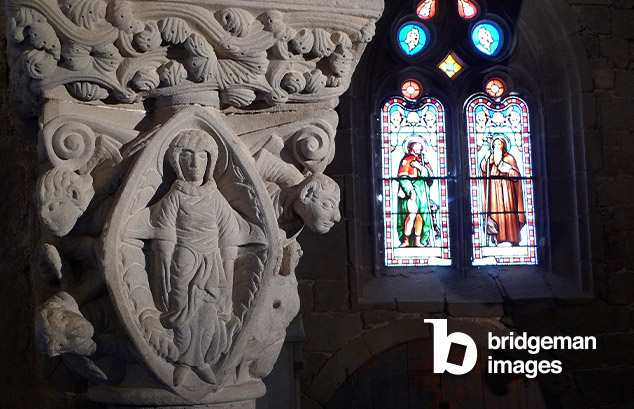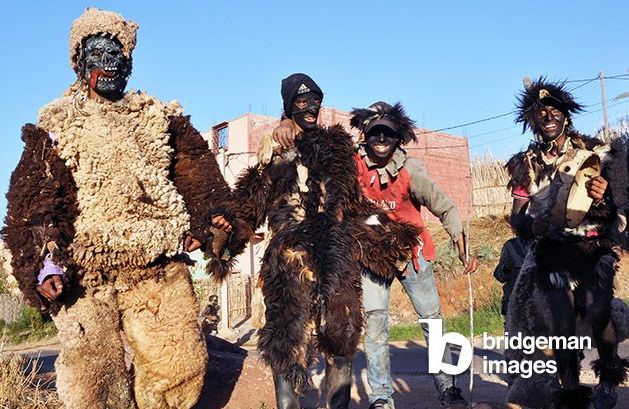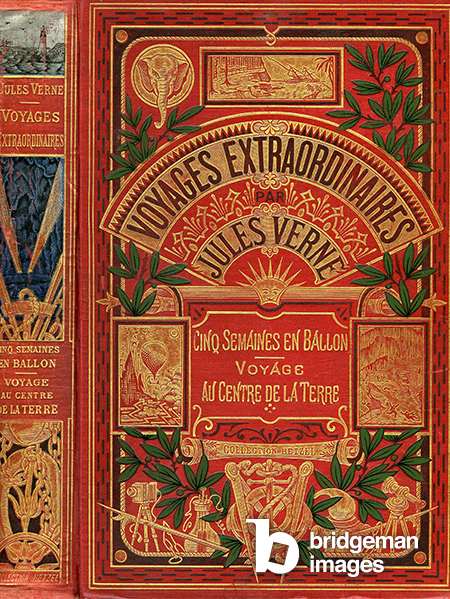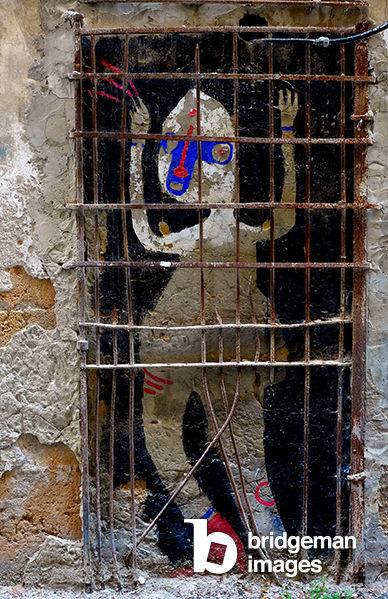Published 15/03/2023
Patrice Cartier is a journalist, photographer and writer. He worked for a long time for magazines and newspapers, producing photojournalism, articles and photographs. He then turned to publishing, focusing on children's literature. This led him to adapt great classics, both in terms of text and illustration.
Bridgeman Images represents his photographic archive, which includes more than 11,000 images.
Here he presents his interests and his favourite images.
Castles, Abbeys, Romantic Art
%20(photo)%20_%20Bridgeman%20Images.jpg)
I live in the south of France, in Occitania, a region marked in the 12th century by the development of the Cathar religion and the merciless war waged against the region's inhabitants by the Catholic Church and its army of Crusaders. Today called Cathar Country, this territory preserves many testimonies of this period, medieval castles, churches, abbeys, and Romanesque sculpture, which contributes to the happiness of a history, art and architecture lover!

Carnival
-%20exit%20of%20the%20Meuniers%20band%20on%20the%20first%20day%20of%20the%20carnival%2C%20in%20the%20central%20square_%20Photo%20by%20Patrice%20Cartier_%20_%20Bridgeman%20Images.jpg)
Born in January, in the middle of the carnival period, I have always been fascinated by these festive and mysterious manifestations of folklore specific to each country and region. From the Limoux carnival in the upper Aude valley to the Berber Boujloud in southern Morocco, carnival customs stimulate my photographic appetite.

Street Art
Another passion of mine is graffiti, sometimes of great artistic quality, which I seek out when I travel around the world. Most of the time, these works have a short life span. This is what happened with the fresco on the left, painted on the walls of a building destined for destruction. The one on the right, painted behind a gate in an alley in Palermo, remained for several years.
Animals' Illustrations
Horse, bear, elephant... whether they are natural or stylized, under the pencil of 19th-century caricaturists (Granville, Cham, Daumier...) or on the woodcuts of the 19th century, drawn by Gustave Doré for La Fontaine's Fables, or in the pages of sensational news stories in the Petit Journal Illustré, animals and their relationship with humans are always an inexhaustible source of inspiration.
Jules Verne
%20_%20Private%20Collection%20_%20%C2%A9%20Patrice%20Cartier_%20All%20rights%20reserved%202023%20_%20Bridgeman%20Images.jpg)

Having inherited from my father, who had a passion for the visionary universe of this writer, the same passion and the complete collection of his Extraordinary Voyages in the original editions of the 19th century, I have endeavoured to reproduce, in the best possible conditions, the engravings which illustrated these novels. Extending this approach, I am still trying to unearth everything related to the Vernian universe, what is sometimes called (with a little condescension and irony) the Jules Verneries. This is how the torn cover of a cheap adventure booklet, rescued from a paper bin, ended up being published in the Jules Verne Album of... the Pléiade!
Children's Literature
%20for%20one%20of%20the%20first%20editions%20of%20Frank%20Baum's%20book%20%C2%A9%20Patrice%20Cartier_%20All%20rights%20reserved%202023%20_%20Bridgeman%20Images.jpg)
As a photographer, but also an author of texts for young readers, I have linked these two activities by making adaptations of great classics of literature for today's children, such as Jules Verne's Journey to the Centre of the Earth, Robinson Crusoe, Alice in Wonderland or The Wizard of Oz. This led me to work on the illustrations of the time, but also on derivative images such as those from advertising placards, game boxes, chromos, postcards, etc.
%2C%20circa%201880_%20Engraving%20by%20G_%20Lafosse_%20_%20Photo%20%C2%A9%20Gusman%20_%20Bridgeman%20Images.jpg)
Literature
Like most authors, I am also a great reader. And I love to browse through texts in their original editions. This leads me to acquire old books, sometimes in poor condition. Tightening bindings and reattaching covers, far from being a thankless task, is an absolute pleasure for me! I extend this pleasure by photographing the books that seem worthy of interest and completing the physical repair with digital retouching. This is how well-cleaned original dust jackets can sometimes be used again as covers for modern reissues.
%20_%20Private%20Collection%20_%20Bridgeman%20Images%20.jpg)
Ephemera - Eroticism
Who hasn't been surprised to see one of these disturbing photographs, slipped as a bookmark inside an erotic book or forgotten in the middle of a heap of old papers in a junk shop trunk, a fleeting memory of unconfessed and perhaps paid-for love affairs? My favourite is this one, a beautiful mise en abyme of a naked woman putting her hair back up in front of a mirror in which is reflected a painting showing a woman arranging her hair. All this under the absent gaze of a fully clothed man...
"Small" Museums
Away from the internationally renowned "big" museums, there is a multitude of smaller museums of modest appearance and reputation, full of masterpieces. It is always a pleasure to discover fabulous collections of paintings, sculptures or archaeology outside the usual tourist spots and to spend hours taking photographs. In Spain, for example, I am thinking of the Cau Ferrat Museum in Sitges or the Frederic Marès Museum in Barcelona. In France, I would mention the extraordinary gallery of Orientalist painters in the Museum of Art and History in the city of Narbonne. The Roman remains are skilfully displayed in the Narbo Via museum.
%2C%20Lazerges%2C%20Jean%20Raymond%20Hippolyte%20(1817-87)%20_%20Musee%20d'Art%20et%20d'Histoire%2C%20Narbonne%2C%20France%20_%20%C2%A9%20Patrice%20Cartier_%20All%20rights%20reserved%202023%20_%20Bridgeman%20Images.jpg)
Key periods
-%20the%20French%20general%20Paul%20Pau%20(1848-1932)%20climbs%20on%20a%20white%20horse%20passes%20in%20front%20of%20a%20German%20convoy%20%C2%A9%20Patrice%20Cartier_%20All%20rights%20reserved%202023%20_%20Bridgeman%20Images.jpg)
Like all iconography enthusiasts, I have my favourite periods. Periods of human history that, for one reason or another, touch me most deeply. In addition to the medieval period already mentioned (particularly the Middle Ages of southern France in the 12th century), I am more interested in finding documents concerning the French colonial period and the First World War. This is an opportunity to restore glass plates, a delicate but exciting job.
I was about to forget prehistory, also one of my favourite fields, certainly in memory of the long-ago time when I was excavating in many caves and megalithic monuments, under the direction of the great prehistorian Jean Guilaine!
%20published%20at%20the%201889%20Universal%20Exhibition%20in%20Paris%2C%20a%20dolmen%20is%20considered%20a%20prehistoric%20house%20and%20not%20a%20tomb%20%C2%A9%20Patrice%20Cartier_%20All%20rights%20reserved%202023%20_%20Bridgeman%20Images.jpg)
And more... Theatre, cinema, vintage advertisements, portraits of artists and writers: to be found among Patrice Cartier's collections at Bridgeman Images!
%2C%20Gill%2C%20Andre%20(1840-85)%20_%20Private%20Collection%20_%20Bridgeman%20Images.jpg)
Get in touch with our team; we are always happy to help with your research at no obligation or additional cost.
Register or connect to our site to access exclusive tools, including faster image and video downloads.

%20_%20%C2%A9%20Patrice%20Cartier_%20All%20rights%20reserved%202023%20_%20Bridgeman%20Images.jpg)
%201988%20-%20the%20main%20motif%20is%20signed%20by%20Jean-Louis%20Bigou%2C%20OK%20for%20publication%20without%20additional%20rights%20-%20Photo%20Patrice%20Cartier%20-%20_%20Bridgeman%20Images.jpg)

-%20street-art%20(street%20art)%20-%20forbidden%20sense%20sign%20make-up%20and%20graffiti%20on%20a%20wall%20-%20tag%2C%20look%20-%20Photo%20Patrice%20Cartier%20-%20_%20%C2%A9%20Patrice%20Cartier_%20All%20rights%20reserved%202023%20_%20Bridgeman%20Images.jpg)
%20smokes%20the%20cigar_%20drawing%20by%20J_J_%20Grandville%20(1803-1847)%2C%20in%20Scenes%20de%20la%20vie%20privee%20et%20publique%20des%20animaux%2C%201842_%2C%20Grandville%20(Jean%20%20Photo%20%C2%A9%20Gusman%20_%20Bridgeman%20Images.jpg)
%2C%20Meaulle%2C%20Fortune%20Louis%20(1844-1901)%20%26%20Meyer%2C%20Henri%20(1844-99)%20_%20%C2%A9%20Patrice%20Cartier_%20All%20rights%20reserved%202023%20_%20Bridgeman%20Images.jpg)
%20with%20the%20head%20crowned%20with%20laurel%2C%20late%202nd%20-%20early%203rd%20century%20(fresco)%2C%20Roman%2C%20(2nd-3rd%20century)%20_%20Musee%20Narbo%20Via%2C%20Narbonne%2C%20France%20_%20%C2%A9%20Patrice%20Cartier_%20All%20rights%20reserved%202023%20_%20Bridgeman%20Images.jpg)
%20Museum%20of%20world%20cultures%20-%20Thai%20art%2C%20smile%2C%20serenite%2C%20lotus%20position%2C%20yoga%2C%20zen%20-%20_%20%C2%A9%20Patrice%20Cartier_%20All%20rights%20reserved%202023%20_%20Bridgeman%20Images.jpg)

